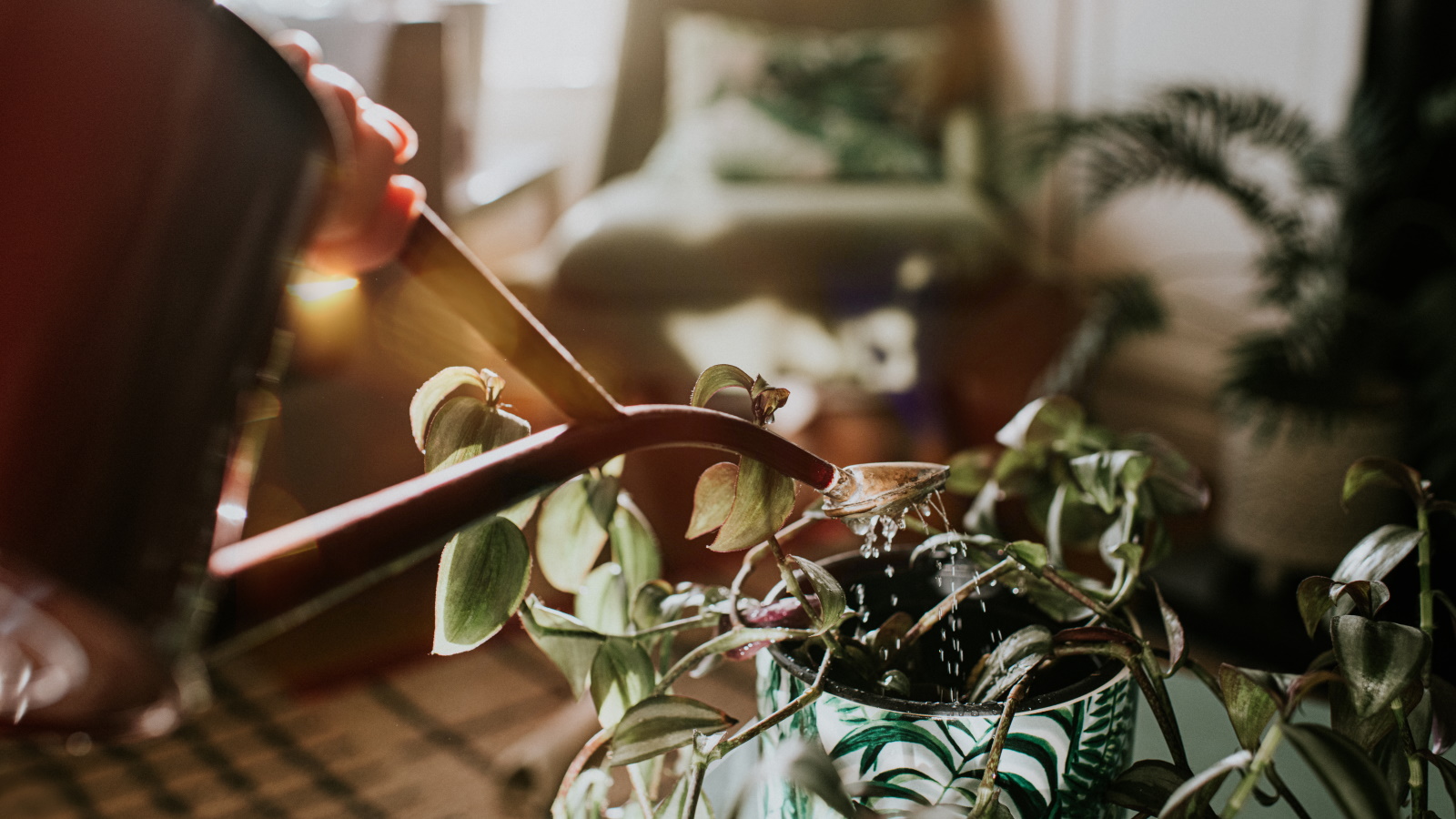
The art of watering can be tricky to master to keep the best indoor plants happy. Knowing when to water, how much water to use and even which method of watering can be a lot to get your head around when looking after multiple indoor plants, especially if you're also balancing knowing how to water outdoor plants in your yard.
'The first thing I tell people is not to water on a schedule, but to check your plants on a schedule to know if they need watering,' says Lisa Eldred Steinkopf, houseplant expert at The Houseplant Guru.
But even after checking when your plant needs watering, different types of plants require different kinds of methods. For example, when watering orchids it's important not to overwater, while watering air plants also requires special care.
Whatever the case, there is a whole host of ways to go about ensuring your indoor plants don't go thirsty. We've gathered expert advice on four different methods, the plants they work for and knowing when it's time to give your plants a drink.
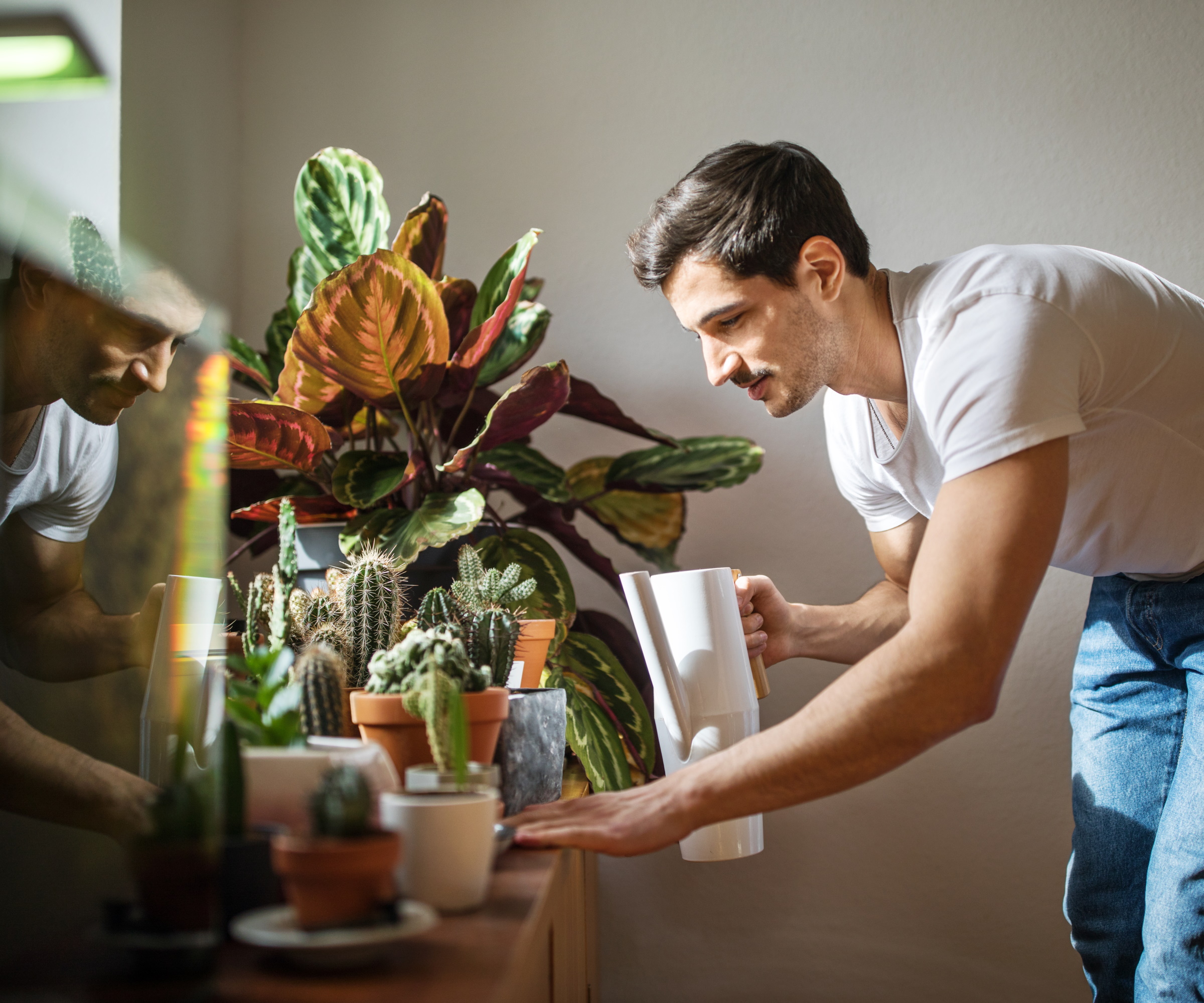
4 ways to water houseplants
Knowing how and when to water your different houseplants can be daunting, especially with the risk of turning foliage yellow and droopy if not done correctly. Follow these key methods and you won't go far wrong.
1. Water at soil level
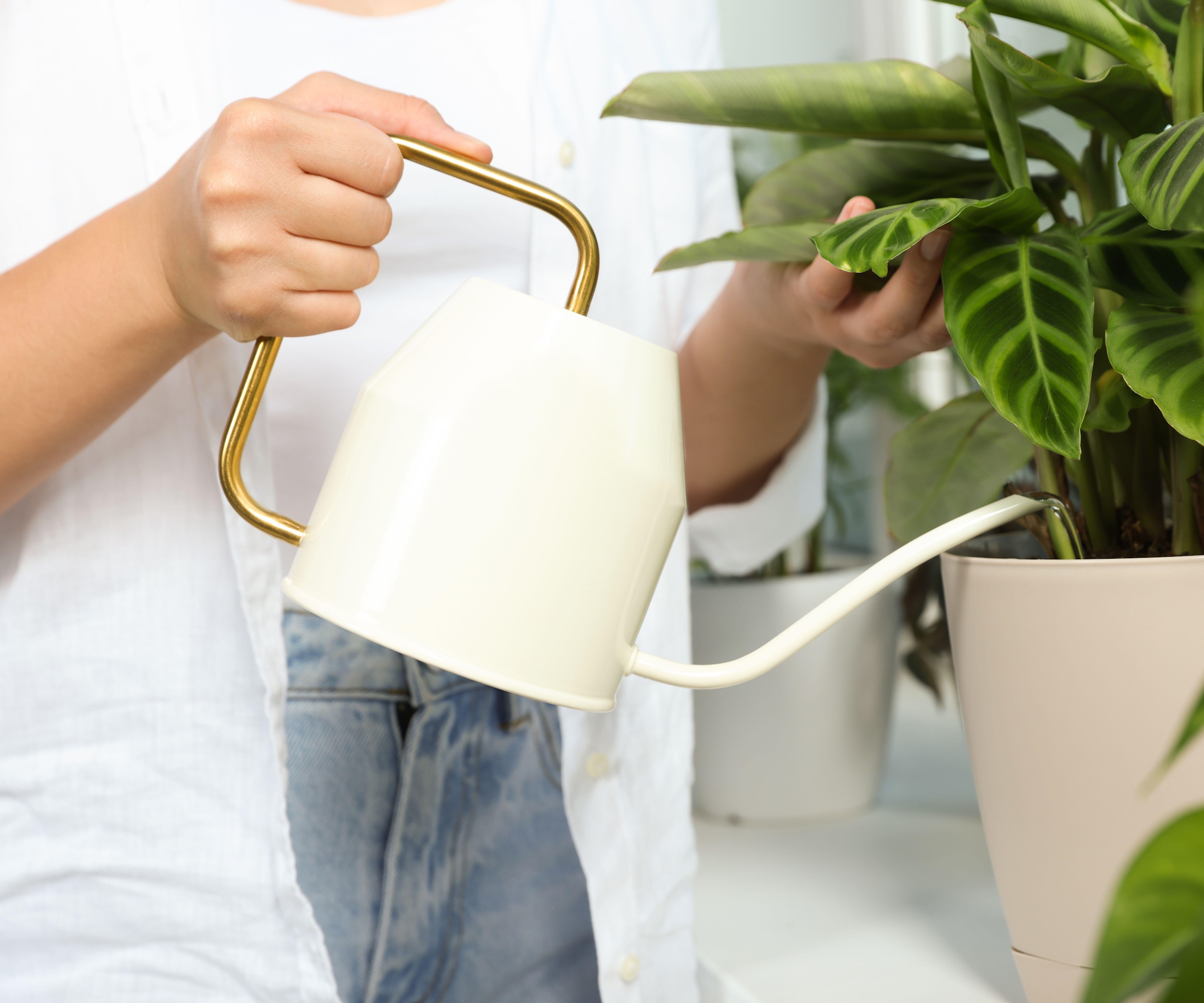
For the majority of houseplants, watering at soil level is a reliable option. Using a watering can or jug, like this watering can from Greendigs, you can water the plant below any foliage and towards the center to ensure the water reaches the roots.
'Before watering, check the soil moisture by inserting your finger into the soil. Water when the top inch is dry,' says Tyler Miller, co-founder of online plant shop Plantology.
Many of easy indoor plants will thrive happily by watering the soil, including spider plants and snake plants.
2. Water from below
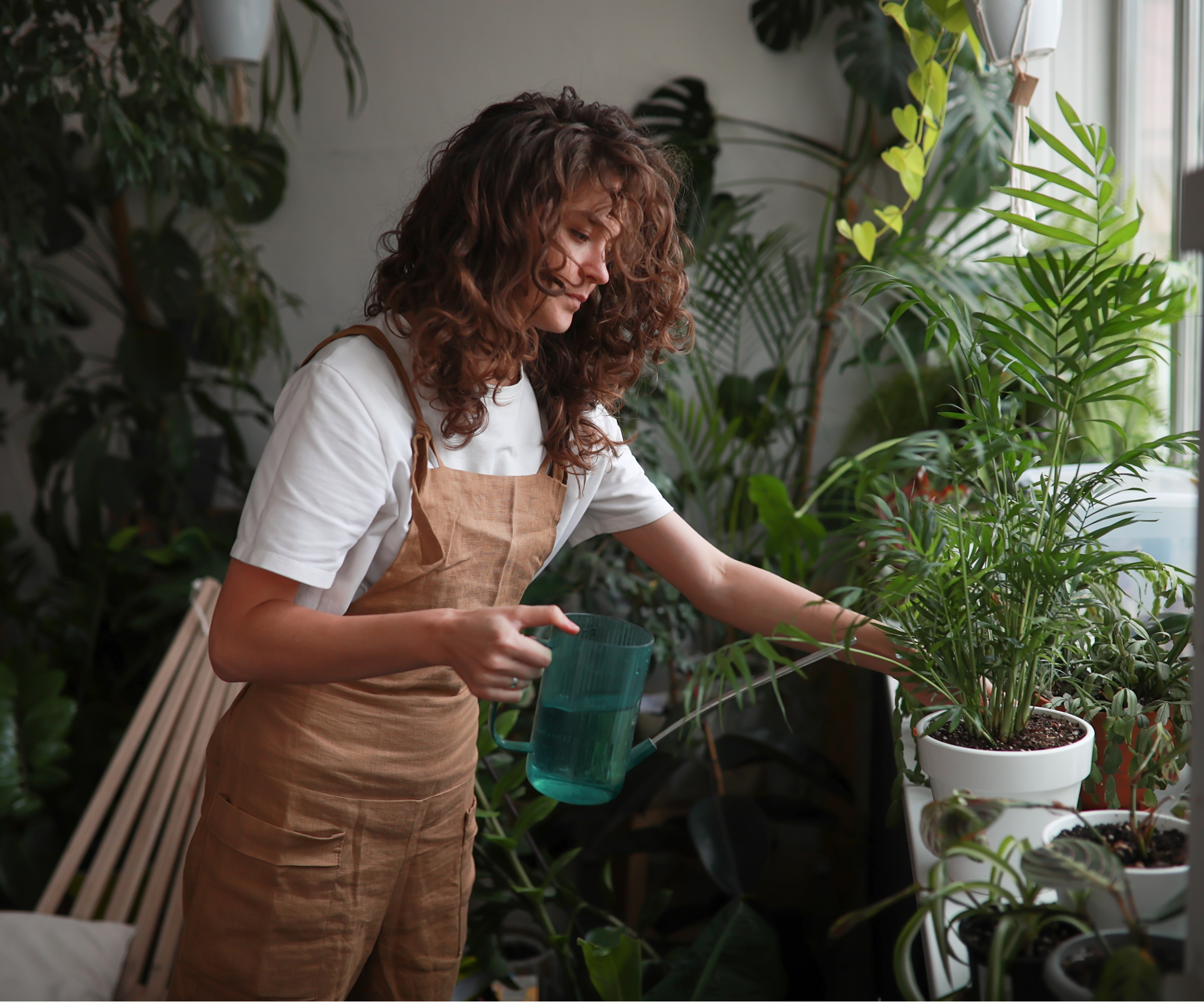
For some plants with larger foliage, it can be beneficial to water from the bottom of their container at the roots to ensure they receive enough water. A pot with drainage holes and a saucer is best for this method to be successful, like these ceramic containers from Amazon.
'Watering from the bottom is a fine way to water many plants, as the water is drawn up from the bottom. You'll know that the root ball is fully moistened when the top of the soil is damp,' says Lisa Eldred Steinkopf.
This is also a good method for plants that like to have consistent moisture but are susceptible to being over-watered because you can monitor the water levels in the saucer. For example, you might find that calathea leaves curl when incorrectly watered, so watering from the bottom can help you see when it has had enough and stopped absorbing.
'Choose a well-draining potting mix appropriate for the type of plants you have. This helps prevent waterlogging and allows for proper aeration,' says Tyler.
3. Mist foliage and aerial roots
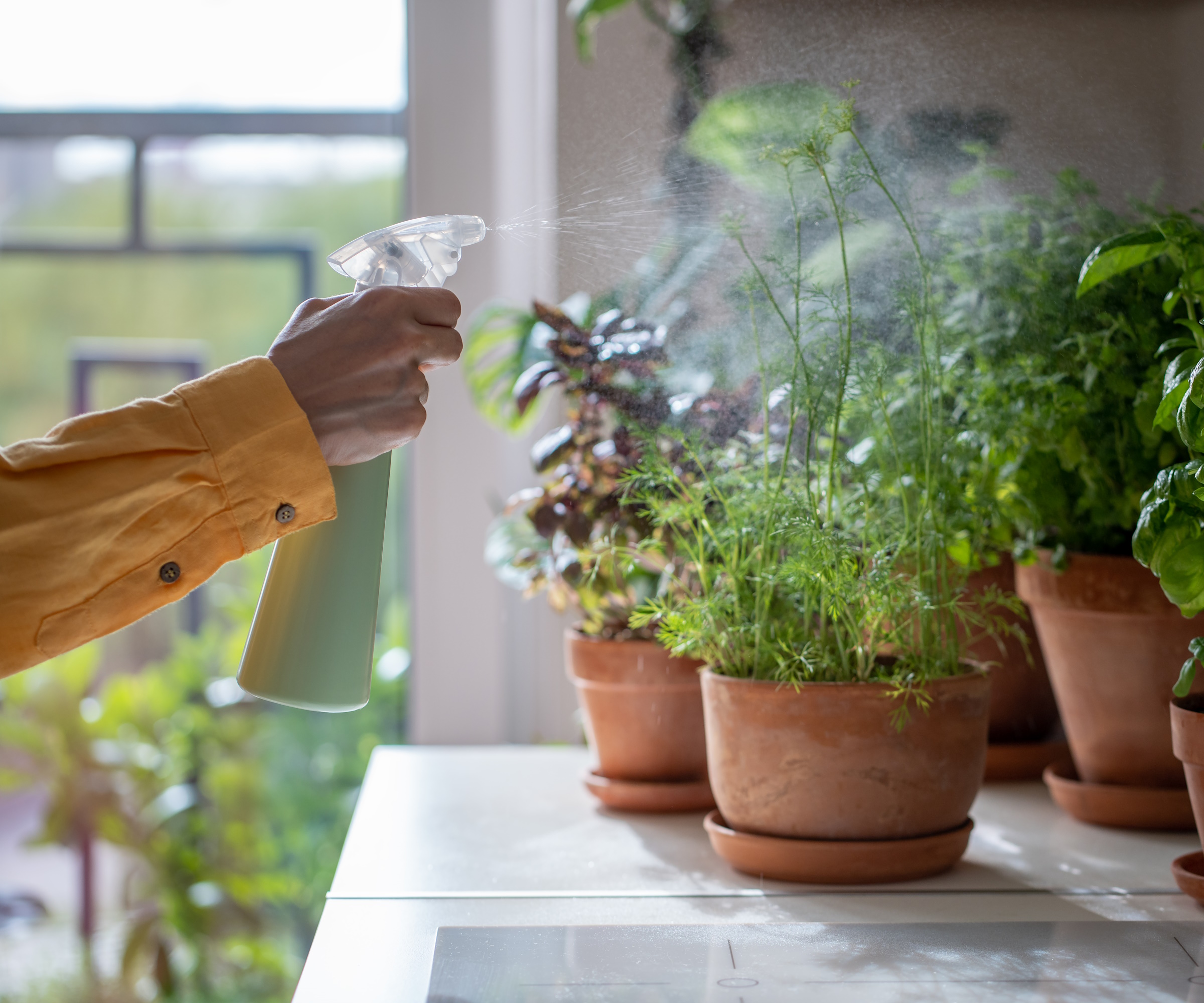
Houseplants that are from more tropical environments require particular care, and it's important to ensure they aren't over-watered but have a consistent level of humidity and moisture.
Regularly using a mister, like this black mister from The Sill, will keep humidity levels up and ensure they don't dry out but also don't get too much water. Plants with aerial roots like monsteras and orchids will appreciate this method to gain moisture they don't get from soil.
'Some plants, especially tropical varieties, thrive in higher humidity. Consider also using a humidity tray or a room humidifier, especially during the winter months when indoor air tends to be drier,' says Tyler.
Pebble trays can be great for humidity. You regularly top up the water on the tray and it evaporates among the pebbles, increasing moisture in the air around the plant.
4. Water moderately
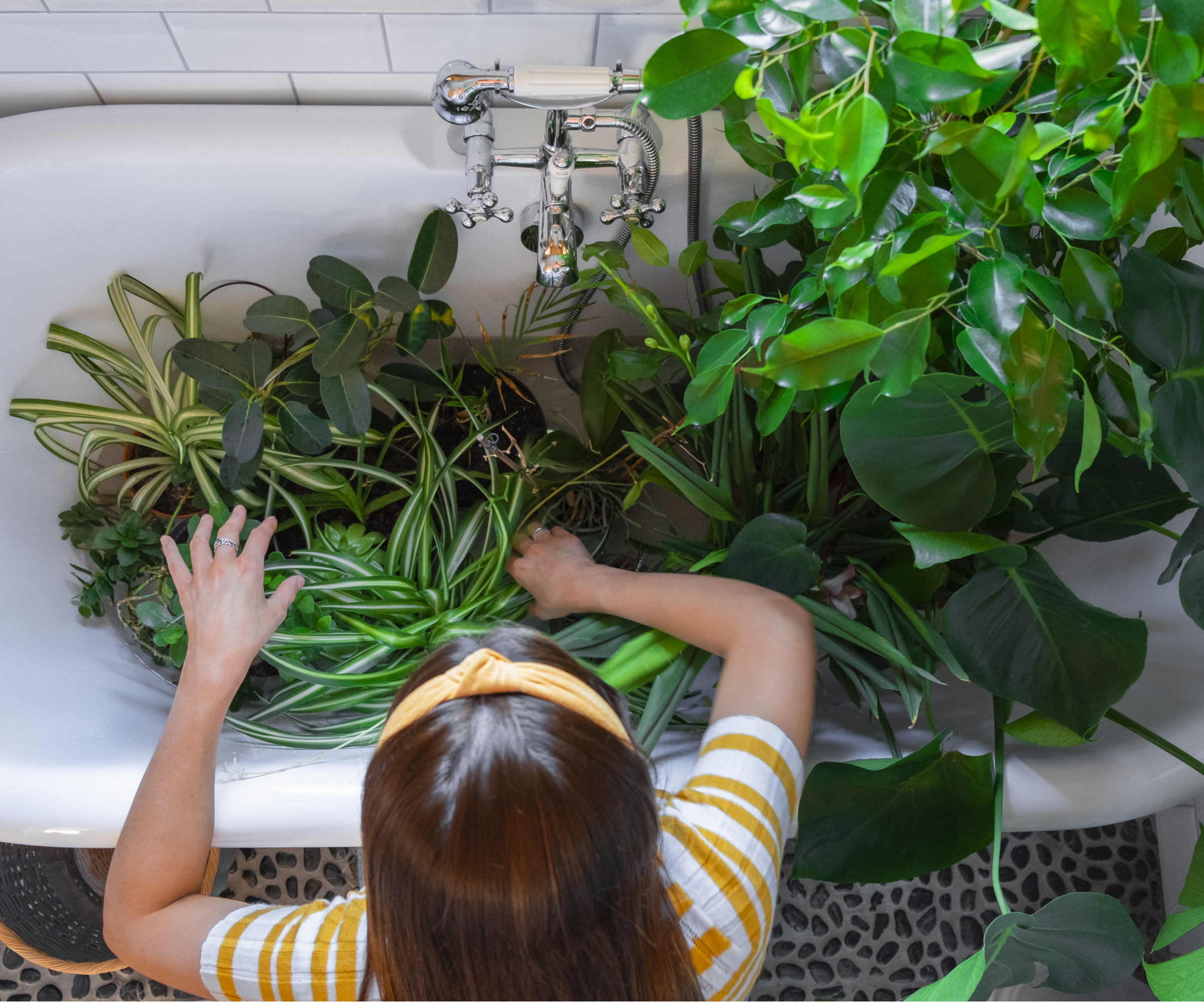
A popular way that many plant parents ensure their plants are getting enough water is by giving plants a very moderate watering and then allowing the soil to dry out before it's time to water again.
'A plant should be watered thoroughly every time it is watered. That means the entire root ball should be moistened. Water all the way around the plant to make sure all the roots receive moisture,' says Lisa.
You can also hold plants under a faucet to achieve this or let them sit in a bowl or shallow bath of water to soak before taking it out again to dry.
You can do this with most indoor plants but this method will work particularly well for those native to warmer climates, such as succulents which are drought-tolerant and can go long periods between watering.
FAQs
How do I water my houseplants while on vacation?
Knowing how to keep your indoor plants at a good water level while you're away for days or even weeks at a time is a familiar worry among houseplant owners.
There are lots of ways you can water your plants while on vacation, but the best methods for houseplants include using a wet rag with one end in a bowl of water and the other in your plant's soil. It will draw moisture through the connecting cloth and keep it happy while you're gone. You can also move your houseplants closer together so that they promote moisture among each other.
Can you over-water houseplants?
Over-watering houseplants is a common mistake plant owners make. That's why it's always important to research the required care for your indoor plants, as ideal moisture levels can differ significantly between different types of plant.
Houseplants will indicate to you when they have had incorrect watering, such as monstera leaves turning yellow, money trees losing leaves and orchids wilting.
Can you water houseplants with rainwater?
Using rainwater is a really good way to water your indoor plants. You can use a rain chain or water butt to collect rainwater in your yard and then use this to water both your indoor and outdoor plants. Collecting rainwater is a sustainable way to keep your indoor plants watered and it can also help save money on your water bill.
Watering indoor plants is essential for their care and to keep them happy in your home. While many plants are low-maintenance, others require more particular watering care. Luckily, there are different methods you can use to suit the different needs of your plants.







